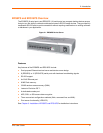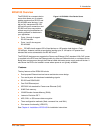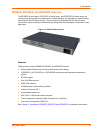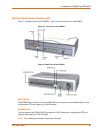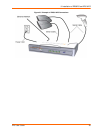
2: Introduction
EDS User Guide 22
By protecting the privacy of serial data transmitted across public networks, users can maintain
their existing investment in serial technology, while taking advantage of the highest data-protection
levels possible.
SSH and SSL are able to do the following:
Verify the data received came from the proper source
Validate that the data transferred from the source over the network has not changed when it
arrives at its destination (shared secret and hashing)
Encrypt data to protect it from prying eyes and nefarious individuals
Provide the ability to run popular M2M protocols over a secure SSH or SSL connection
In addition to keeping data safe and accessible, the EDS has robust defenses to hostile Internet
attacks such as denial of service (DoS), which can be used to take down the network. Moreover,
the EDS cannot be used to bring down other devices on the network.
You can use the EDS with the Lantronix Secure Com Port Redirector (SCPR) to encrypt COM
port-based communications between PCs and virtually any electronic device. SCPR is a Windows
application that creates a secure communications path over a network between the computer and
serial-based devices that are traditionally controlled via a COM port. With SCPR installed at each
computer, computers that were formerly “hard-wired” by serial cabling for security purposes or to
accommodate applications that only understood serial data can instead communicate over an
Ethernet network or the Internet.
Terminal Server/Device Management
Remote offices can have routers, PBXs, servers and other networking equipment that require
remote management from the corporate facility. The EDS easily attaches to the serial ports on a
server, Private Branch Exchange (PBX), or other networking equipment to deliver central, remote
monitoring and management capability.
Troubleshooting Capabilities
The EDS offers a comprehensive diagnostic toolset that lets you troubleshoot problems quickly
and easily. Available from the Web Manager, CLI, and XML interfaces, the diagnostic tools let you:
View critical hardware, memory, MIB-II, buffer pool, and IP socket information.
Perform ping and traceroute operations.
Conduct forward or backup DNS lookup operations.
View all processes currently running on the EDS, including CPU utilization and total stack
space available.
Configuration Methods
After installation, the EDS requires configuration. For the unit to operate correctly on a network, it
must have a unique IP address on the network. There are four basic methods for logging into the
EDS and assigning IP addresses and other configurable settings:
DeviceInstaller: Configure the IP address and related settings and view current settings on the
using a Graphical User Interface (GUI) on a PC attached to a network. See Using DeviceInstaller
(on page 41).






